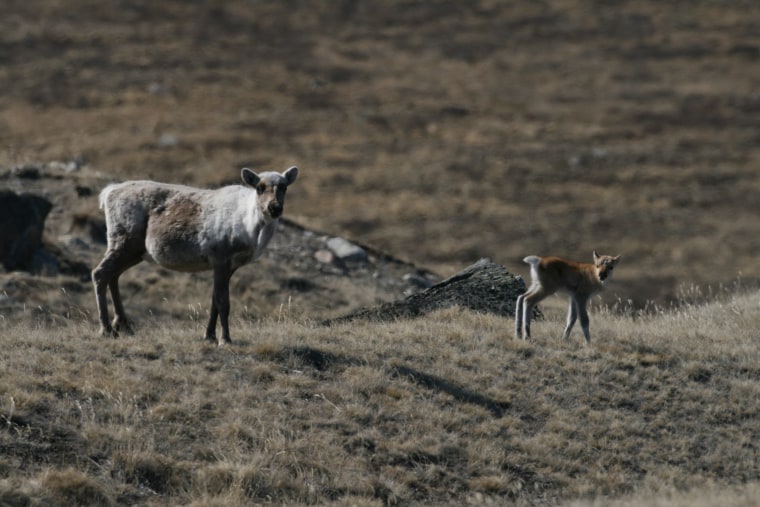Arctic warming is affecting plants, birds, animals and insects as ice melts and the growing season changes, scientists report in a new review of the many impacts climate change is having on the far north.
"Arctic ecosystems ... have been severely perturbed," the experts wrote in Friday's edition of the journal Science.
As the global climate changes, the Arctic Circle has been warming faster than other regions and scientists have documented a series of affects on wildlife in the region.
"The Arctic as we know it may soon be a thing of the past," Eric Post, an associate professor of biology at Penn State University, said in a statement.
Post led a research team that studied the Arctic during the International Polar Year, which ended in 2008.
Snow cover has declined steadily in recent years and in the last two to three decades the minimum sea ice coverage declined sharply, a change that affect animals like polar bears that depend on the ice for habitat and hunting.
"Species on land and at sea are suffering adverse consequences of human behavior at latitudes thousands of miles away," Post said, referring to emissions of greenhouse gases from burning fossil fuels. "It seems no matter where you look — on the ground, in the air, or in the water — we're seeing signs of rapid change."
In addition, he added, the Arctic is very complex and "not all populations within a given species respond similarly to warming because physical and landscape features that interact with climate can vary tremendously from site to site."
Caribou hurt, reindeer helped
For example, migratory caribou in Greenland and elsewhere are declining, the researchers said, since the animals have not been able to adjust their calving season to keep it synchronized with changes in plant growth.
As a result, the time when the females need the most food no longer matches the time when the most food is available, and fewer calves survive. In addition, warmer weather can produce more insects and parasites to prey on the caribou.
Another example: Polar bears and ringed seals, which give birth in lairs under the snow, are losing pups when lairs collapse in unusually early spring rains.
On the other hand, wild reindeer on the Norwegian islands of Svalbard appear to have benefited from the earlier seasonal loss of snow cover. These animals don't migrate and the longer growing season and less snow cover means more food for them.
The researchers found that with warmer conditions red foxes are moving north, displacing Arctic foxes from their territories.
Also expanding their territories to the north are the winter moth, which defoliates mountain birch forests, and species of Arctic trees and shrubs.
Having more shrubs can provide food for reindeer and musk oxen grazing, and their trampling and defecation encourages the growth of grasses, which in turn attract geese.
Goose species shifts north
And, as if to help prove the case, the U.S. Geological Survey reported separately that the Pacific brant, a small sea goose, has shifted northward from areas such as Mexico to sub-Arctic areas as Alaska's climate has warmed over the last four decades.
Before 1977 only about 3,000 brant were detected wintering in Alaska, while now that has jumped to as many as 40,000 birds.
The changing Arctic climate appears related to changes in the availability and abundance of eelgrass, the primary food of brant in their nonbreeding season, survey researchers said.
The study and survey follow a study last week where researchers reported that the Arctic is warmer than it has been in 2,000 years, even though it should be cooling because of changes in the Earth's orbit that cause the region to get less direct sunlight.
Post's research was funded by Aarhus University in Denmark, the Danish Polar Center and the U.S. National Science Foundation. In addition to the U.S. Geological Survey, funding for its study came from the Izembek National Wildlife Refuge, U.S. Fish and Wildlife Service.
Post and his colleagues warned that the Arctic findings could signal changes elsewhere. "These rapid changes may be a bellwether of changes to come at lower latitudes," they wrote, "and have the potential to affect ecosystem services related to natural resources, food production, climate regulation, and cultural integrity."
